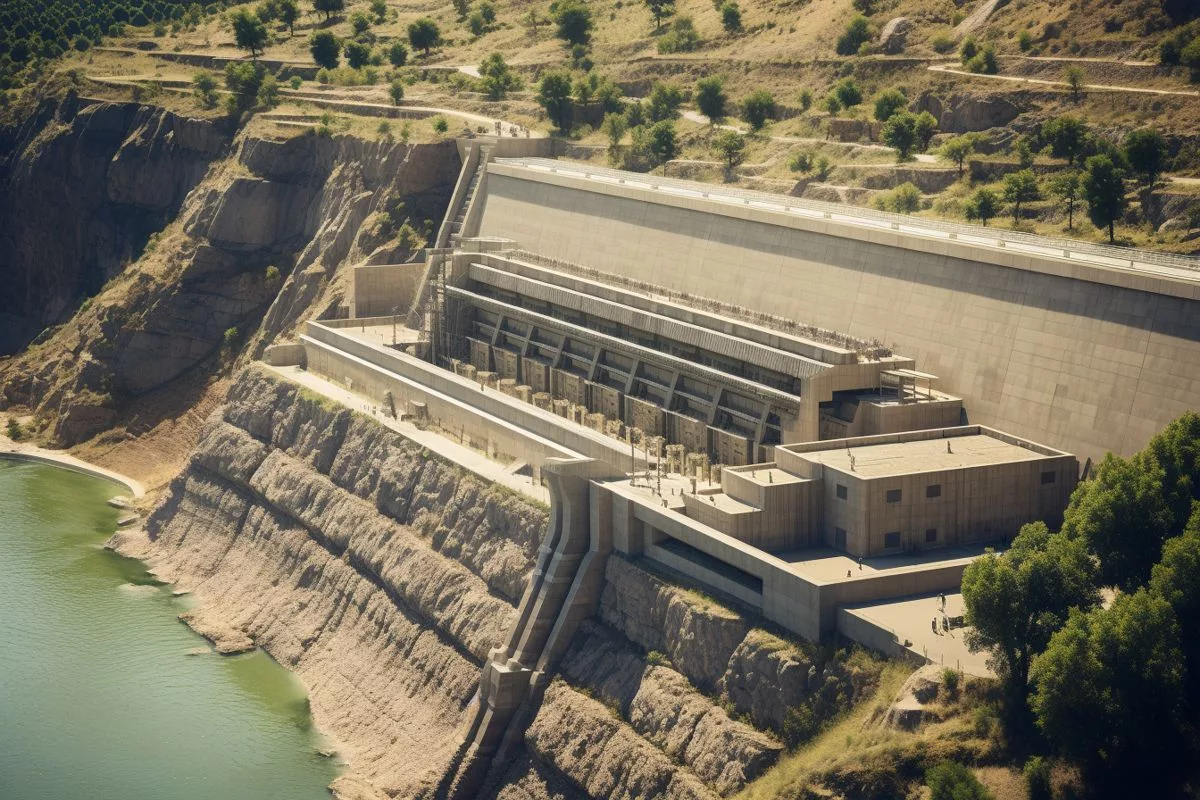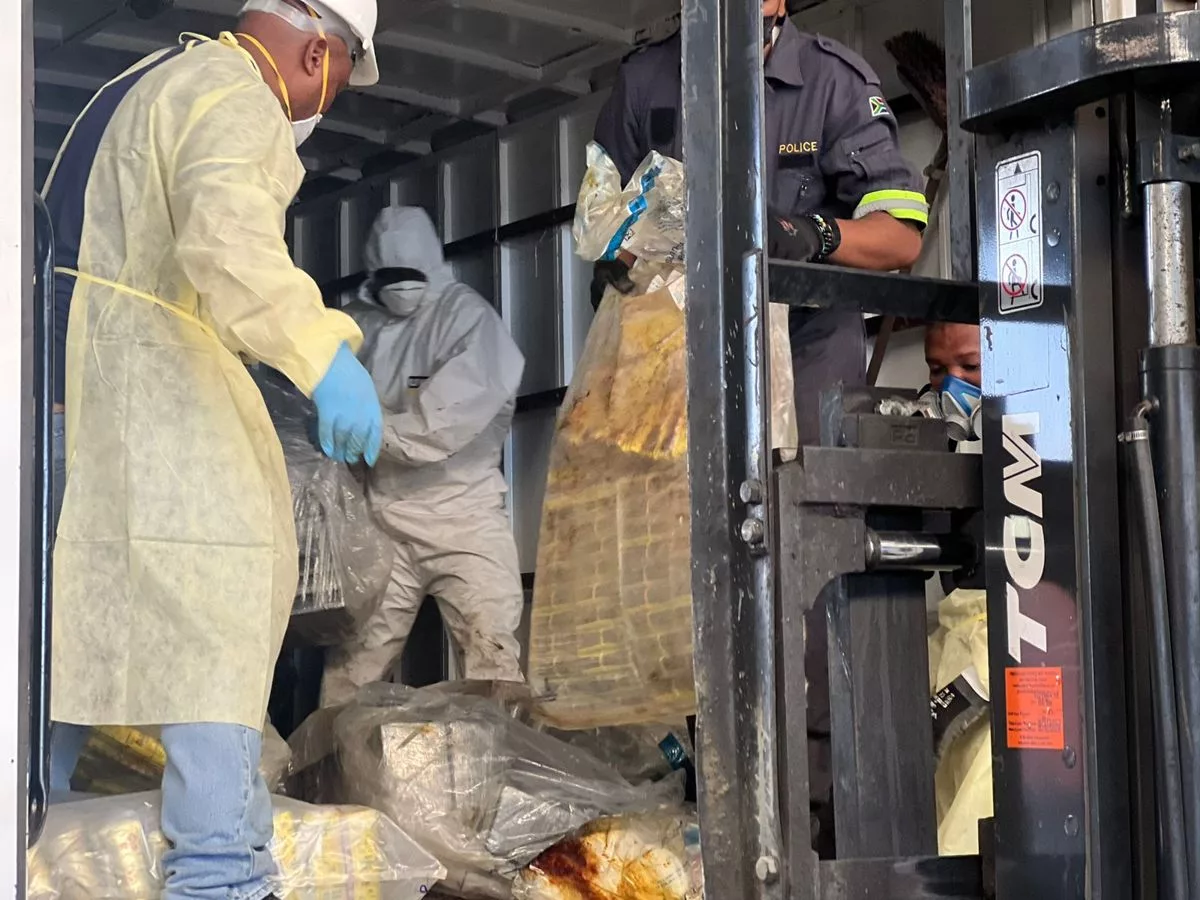The recent trial blasting at Clanwilliam Dam is a crucial milestone in the long-awaited construction phase to increase the dam wall’s height by 13 meters. The project will provide additional water resources to the region’s agricultural industry, generate employment opportunities, and boost the economy along the West Coast corridor. The trial blasting involved drilling 116 holes, consuming 920 kg of explosives, and excavating approximately 1253 m3 of hard rock, paving the way for regular blasting operations and establishing safety measures. The project’s success will improve the lives of the people living in the West Coast region and contribute to overall development.
What is the significance of the trial blasting at Clanwilliam Dam?
The recent trial blasting at Clanwilliam Dam marks the start of the long-awaited construction phase, which aims to increase the dam wall’s height by 13 meters, providing additional water resources to the region’s agricultural industry, generating employment opportunities, and boosting the economy along the West Coast corridor. The process involved drilling 116 holes, consuming 920 kg of explosives, and excavating approximately 1253 m3 of hard rock. This event paved the way for regular blasting operations and established parameters for future blasts, ensuring adherence to crucial safety measures.
A Crucial Milestone for Clanwilliam Dam
The Clanwilliam Dam, situated in the West Coast of South Africa, has recently achieved a significant landmark as the Department of Water and Sanitation (DWS) successfully executed its first trial blasting. This vital event signifies the start of the dam’s long-awaited construction phase, which faced numerous obstacles and delays in the past.
This project, centered around the Clanwilliam Dam, is of utmost importance as it is one of the most substantial government infrastructure investments in the Western Cape. The primary objective is to increase the dam wall’s height by 13 meters, a bold endeavor that will supply additional water resources to the region’s agricultural industry, generate employment opportunities for the local community, and boost the economy along the West Coast corridor.
The inaugural trial blasting on the dam’s left bank is particularly noteworthy given the project’s turbulent history. Acquiring service providers and materials had been a challenging process, resulting in construction phase delays. Nevertheless, the recent trial blast success marks a turning point for the dam, paving the way for a wave of construction activities in the weeks ahead.
Trial Blasting: Process and Execution
The trial blasting process entailed drilling 116 holes with an average depth of 4 meters per hole. The exercise consumed a total of 920 kg of explosives and led to the excavation of approximately 1253 m3 of hard rock. This event marked the beginning of regular blasting operations, which will take place nearly every month to complete all remaining hard excavations on both banks of the dam.
Before the trial blast, the blasting subcontractor presented design plans to an Engineer and Approved Professional Person (APP) for evaluation. The APP, in collaboration with an independent Blasting Specialist, assessed the designs and granted approval. This assessment ensured adherence to crucial safety measures, such as maintaining a minimum distance of 100 meters from the dam wall and employing controlled blasting techniques.
DWS Spokesperson Wisane Mavasa elaborated on the trial blast’s significance, noting that it signaled the start of hard rock excavations on the left bank. In addition to initiating construction activities, the blast also enabled the project team to establish parameters for future blasting events. This information will prove invaluable in protecting the surrounding infrastructure, particularly the dam itself, from potential damages.
Ongoing Construction Activities and Future Prospects
Besides the ongoing blasting operations, several other construction activities are taking place simultaneously. For example, the overburden in the quarry area is being removed, and the N7 roadway is being expanded. These additional efforts contribute to the overall progress of the Clanwilliam Dam project.
Despite the challenges encountered throughout the years, the DWS remains steadfast in its commitment to completing the Clanwilliam Dam project within the revised timeframes, budgets, and specifications. The recent trial blasting demonstrates the unwavering determination of all stakeholders involved in bringing this essential infrastructure project to life.
The successful trial blasting at the Clanwilliam Dam signifies the dawn of a new era for the West Coast region, where residents can look forward to increased access to water resources, job opportunities, and economic growth. The future appears promising for the people living in this area, as they eagerly await the completion of a project that will undoubtedly improve their lives for the better.
The narrative of the Clanwilliam Dam project is one of resilience and commitment, as it overcomes a tumultuous past and embarks on a more optimistic future. As construction activities continue to gather momentum, the people of the West Coast can take pride in witnessing the realization of a project that will not only enhance their lives but also contribute significantly to the overall development of their region.
1. What is the Clanwilliam Dam project?
The Clanwilliam Dam project aims to increase the dam wall’s height by 13 meters, providing additional water resources to the region’s agricultural industry, generating employment opportunities, and boosting the economy along the West Coast corridor.
2. What is the significance of the trial blasting at Clanwilliam Dam?
The recent trial blasting at Clanwilliam Dam marks the start of the long-awaited construction phase, paving the way for regular blasting operations and establishing parameters for future blasts, ensuring adherence to crucial safety measures.
3. How many holes were drilled in the trial blast, and how much rock was excavated?
116 holes were drilled, and approximately 1253m3 of hard rock was excavated during the trial blasting.
4. How much explosives were used in the trial blasting?
A total of 920 kg of explosives were consumed during the trial blasting.
5. What safety measures were in place during the trial blasting?
The blasting subcontractor presented design plans to an Engineer and Approved Professional Person (APP) for evaluation. The APP, in collaboration with an independent Blasting Specialist, assessed the designs and granted approval. This assessment ensured adherence to crucial safety measures, such as maintaining a minimum distance of 100 meters from the dam wall and employing controlled blasting techniques.
6. What other construction activities are taking place simultaneously with the blasting operations?
Besides the ongoing blasting operations, overburden in the quarry area is being removed, and the N7 roadway is being expanded.
7. What is the overall goal of the Clanwilliam Dam project?
The primary objective of the Clanwilliam Dam project is to increase the dam wall’s height by 13 meters, providing additional water resources to the region’s agricultural industry, generating employment opportunities, and boosting the economy along the West Coast corridor.
8. What are the future prospects for the West Coast region?
The successful completion of the Clanwilliam Dam project will undoubtedly improve the lives of the people living in the West Coast region and contribute significantly to overall development. Residents can look forward to increased access to water resources, job opportunities, and economic growth.








